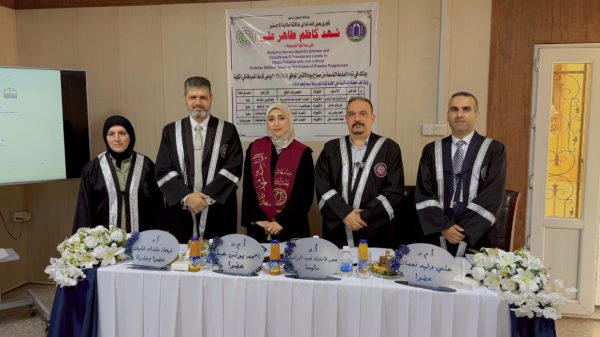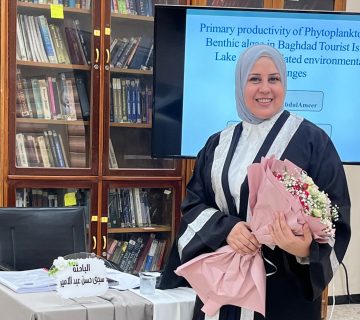Master’s Discussion
The College of Science for Women at the University of Baghdad held a Master’s thesis defense titled: Studying Neuron-Specific-Enolase and Glutathione-S-Transferase Levels in Obese Subjects with and without Diabetes Mellitus Type2
by the student: Shahad Kadhim Taher Ali
This research aimed for investigation the levels of NSE and GST as potential predictive factors for disease progression in obese individuals with T2DM without complications and obese individuals without T2DM and to explore their relationship with markers of insulin resistance.
To evaluate the level of NSE by the ELISA method.
To determine the level of GST by the ELISA method.
To determine FBG and insulin hormone and HOMA IR, and lipid profile test.
To find the relationship of NSE and GST with all parameters.
To define the normal range (cut off value) of NSE and GST in patients
This study was conducted at the College of Science for Women, University of Baghdad and AL-Kindi Teaching Hospital in Baghdad, Iraq, spanning from September 2023 to November 2023. The study included 138 samples (both male and female) with an age range of 35–65, categorized into three groups according to the findings of their medical examinations and their body mass index (BMI): 46 control group with a BMI >25 (G1) and 92 obese patients with a BMI ≥30, divided into two groups: 42 obese with T2DM (G2) and 50 obese without T2DM (G3).
Main Recommendations of the Thesis:
- Addressing obesity through weight loss, lifestyle modifications, and pharmacological interventions, can help mitigate its adverse effects, particularly insulin resistance and the risk of diabetes.in addition innovative awareness programs and proactive health monitoring are long-term investments in reducing the prevalence of obesity and its complications, especially by focusing on sensitive age groups such as adolescents.
- Studying of the levels of NSE and GST in the sera of Iraqi patients with T1DM who depend on insulin injections as a treatment.
- Measuring the Levels of NSE and GST in non-obese diabetic patients and Compared with non-obese control samples.










